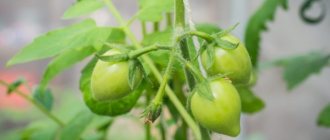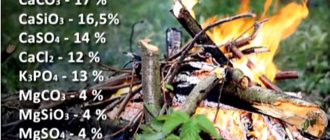How to prepare a greenhouse structure for tomatoes?
Necessary repairs
- Frame inspection : For a timber frame, all lintels and roofing are checked. If malfunctions are detected, they are eliminated. The metal frame is inspected for corrosion. If it is found on parts of the frame, they are replaced.
- Inspection of the coating : broken or cracked glass on glass coatings is replaced, polyethylene coatings with punctures are replaced or sealed, polycarbonate coatings with defects are replaced.
Treatment
Construction and covering material
Disinfection of a greenhouse depends on the material from which it is made . The frame and covering material are disinfected separately.
Frames are made of metal, wood and polyvinyl chloride. Wooden and polyvinyl chloride are treated with sulfur, but metal ones are not. Sulfur spoils metal. For metal frames, use boiling water and vinegar. Polyvinyl chloride frames are also treated with a vinegar solution with water at a temperature of +60. Copper sulfate is suitable for treating a wooden frame.
Coatings
The film or glass is treated with a hot solution of laundry soap (water not higher than +40). Soap is dissolved in water and treated with a brush. Polycarbonate coatings are treated with a manganese solution. Use a hot solution to wash off the entire coating. The corners are treated especially carefully. Then the greenhouse is dried with a draft.
Removable film coverings
Treat with potassium permanganate, dry and store in sealed bags.
Autumn events
Cleaning
Cleaning - removing old plants. Remove above-ground and underground parts. Nothing should interfere with the cleanliness of the beds. Remains of perennial plants must be uprooted and disposed of.
Soil removal
When growing annual vegetables or flowers in a greenhouse, it is necessary to remove the top layer of soil every year. It is necessary to remove at least 15 cm.
The removed soil is disinfected and taken out to open ridges, sprinkled into flower beds or under trees. The removed layer of soil must be replaced as soon as possible . The new layer must be fertile. The soil must be selected perfectly.
There are the following ways to replenish ridges with soil:
- purchase of soil;
- self-preparation of soil.
It is easier to purchase soil, but it may not have all the necessary components. Therefore, it is best to prepare the soil yourself.
The soil structure should be loose . The soil fractions should not be small, so that together with water they do not form dirt, but not large, so that they do not allow water to pass through like a sieve. Nutrients must be stored in the soil. It should contain a sufficient amount of humus. It should not contain mineral fertilizers.
The ability to accept and retain moisture is a prerequisite for soil preparation. It must have a balance between the content of acidic salts and alkali. It must be pre-disinfected. The new soil contains:
- peat;
- sand;
- compost or humus.
Humic acids are used to increase soil fertility . And to enrich the soil with humus, rotted manure or droppings are used. After preparing the new soil, it is treated with Flora-S.
Disinfection
To disinfect greenhouses they resort to:
- treatment with urea;
- treatment with special disinfectants;
- fumigation with sulfur.
The good thing about the sulfur fumigation procedure is that it disinfects not only the soil remaining in the greenhouse, but also the entire greenhouse inside. Therefore, disinfection of a greenhouse by fumigation with sulfur is considered the best and most effective.
Laying new soil
This is the final stage. New soil is introduced instead of the removed layer. Fill it in such a way that there are no voids, compact it and distribute it evenly. Cover the beds with a 5 cm layer of clean, dry straw. After the first snow falls, it is thrown onto the beds with straw.
The higher the snow level, the less the soil freezes , and beneficial microorganisms continue to work on soil fertility.
Why does soil quality matter?
A farmer plants tomatoes in a greenhouse to obtain an early harvest. Tomatoes prefer fertile soils with a neutral or slightly acidic reaction. In this case, the soil must be loose to allow air and moisture to pass to the roots. But it is impossible to grow tomatoes in poor, unstructured soil.
Homemade mixtures
Some farmers prefer to prepare the soil for tomatoes themselves. This is not difficult if you stock up on all the required components in advance.
Required Components
An excellent soil for tomatoes is obtained by mixing in equal parts:
- humus;
- peat with a neutral reaction;
- turf land;
- sand.
To increase fertility, it is recommended to add potassium and phosphorus. These elements can not be mixed with the planting soil, but added to the planting holes: 1 tablespoon of double superphosphate and 1 teaspoon of potassium .
Unacceptable additives
When preparing the soil yourself, it is recommended to ensure that the following does not get into the mixture:
- seeds and parts of weed roots;
- beetle larvae;
- wireworm larvae;
- pieces of broken glass, rusty nails.
See also
How to make drip irrigation for tomatoes in a greenhouse with your own hands
Read
It is prohibited to use dump soil (soil from the sides of highways and rights-of-way) for nutrient mixtures: it contains chemical impurities that are harmful to health.
Ready-made formulations
Some agricultural holdings provide a ready-made mixture of humus and peat. It is completely ready to use. But you need to add other components to it. Purchasing such a product simplifies the preparation of a nutrient mixture for tomatoes. Farmers can save time and purchase ready-made soil for tomatoes. But such a product is not cheap: this will affect the final cost of greenhouse tomatoes.
Those who want to reduce the cost of the process can use a mixture of turf soil and sand as the basis for the soil in the greenhouse, and add 1 liter of special soil for tomatoes to each hole.
Spring activities
They start by warming up the earth.
Warm up in several ways:
- They loosen and prepare the soil for planting, cover it with black film until planting.
- They loosen, dig grooves, water with hot water, bury and cover with film for 2-3 days.
They make warm beds. Remove a 25-40 cm layer of earth. Place bark and sawdust on the bottom of the groove. The top is covered with hay or straw and watered with quicklime. Put the soil back, mixing in compost or rotted manure.
To prepare the soil, perform the following procedures::
- Pre-loosened.
- Warm up the soil.
- Fertilize with organic fertilizers.
- Neutralizes acidity.
- They dig, loosen deeply and level the soil.
- Water with biological solutions.
Cleaning and washing the greenhouse
When preparing for the new season, you cannot save energy, time or medications. Then it’s difficult to change anything, the use of some disinfectants is prohibited, others are effective only in concentrations that are dangerous for plants.
Strengthening structures and replacing glass
Preparations for planting tomatoes should begin with an inspection of the greenhouse. Under the weight of snow, the frame can bend, windows can crack or even fly out, and supports can weaken. All structures must be repaired, damaged glass or polycarbonate sections must be replaced.
If rust appears on the metal, it must be cleaned and the area covered with paint. Particular care should be taken to secure rickety or weakened supports.
Cleaning
Plant residues are removed from the greenhouse. Along with them, pathogens and pest larvae will be partially removed. It is recommended to remove even leaves stuck in the structures.
Sweeping out the trash. Disinfect or change the garter material. It is better not to reuse rags, twine, pieces of cloth used to secure tomatoes on supports, but to throw them away - they are probably a breeding ground for diseases.
Washing
Before processing the greenhouse, it is washed to remove dust and dirt that has accumulated over the year. This is done with hot water, detergents, and a solution of potassium permanganate.
To clean transparent surfaces, use soft rags, sponges, and special devices for windows. It is not recommended to use any abrasives, metal scrapers, brushes, or even hard burlap.
Treatment
Regardless of the processing method, you cannot save disinfectants. This is exactly the case when the concentration of the solution can be made a little higher than what is written in the instructions. When using sulfur bombs, it is better to take an extra one.
The greenhouse must be treated thoroughly so that the disinfectant penetrates into all the cracks and cracks. It is imperative to use personal protective equipment.
Restoring soil fertility after using chemicals
Chemicals kill beneficial microorganisms and bacteria. They begin to be restored a week after using the chemicals. To quickly restore microflora, use Baikal Em-1.
The liquid is prepared 5 days before processing. Add 40 ml of the drug and 4 tablespoons of honey to 4 liters of settled water, mix and cover with a lid. Leave the solution for 5 days and then water the soil with it. After chemical treatment, compost or humus is added to restore humus .
Soil fertility can be increased by solutions of potassium salts of humic acids.
Composition and properties
The physical properties of soil for tomatoes combine lightness and looseness with moisture capacity. It should be soft and crumbly and retain moisture for a long time. Special requirements are imposed on the content of nutrients. Tomatoes require nitrogen, phosphorus and potassium. Their content per liter of soil should not be lower than 350 mg. The basis should be garden soil, humus, turf or leaf soil, compost and a little peat.
Another factor that you should pay attention to before planting is the acidity of the soil. This culture adapts relatively easily to deviations from average values (PH 5.5). The upper threshold for acid-base balance indicators for tomatoes is 6.7 points.
Good to know! Special instruments for measuring soil acidity can be replaced by analyzing weeds growing on the site. If horse sorrel, plantain and horsetail are rampant at the dacha, the soil is acidic and requires the addition of deoxidizers.
The soil for tomatoes should not contain weed seeds, dense dry fragments of clay rocks, stones, metal and plastic debris. The listed fragments impair the permeability and looseness of the soil and prevent root growth. This negatively affects the development of the plant.
Biological method of soil restoration
Biological preparations are used to restore soil fertility. This is the most effective way. It will reduce the likelihood of fungal diseases, suppress the appearance of pathogens, and improve the growth of tomatoes.
Popular biological products:
- Baikal;
- Baktofit;
- Trichodermin.
Complete restoration of the soil will occur after 3-4 years. At the same time, the greenhouse is filled with a portion of organic matter: rotted manure, compost, droppings.
"Fitosporin M" for soil disinfection
This fungicide is used after an outbreak of fungal diseases. The product comes in the form of a paste, powder or liquid. Pasta is more popular. A solution is prepared from it, which retains its properties for a long time. The first time is applied in early spring and repeated after 2 weeks.
It is best to apply in the evening when there is no sun exposure. Prepare the solution on the day of treatment 2 hours before it. For 10 liters of water you need 5 g of powder. A solution is prepared from the paste in a 1:2 ratio. It is necessary to water the soil with this solution a week before planting tomatoes.
Preparation and fertilization
Some time before planting the seedlings in the greenhouse (at least a week), the beds are prepared. The soil is dug up and fertilizers are applied. Please note that it is not always advisable to take humus from a compost pit - if diseased plants were placed there, you risk reintroducing the disease into the greenhouse.
What kind of soil should be in the greenhouse? Tomatoes prefer clay or loamy soil. It is diluted with a mixture of humus, peat and sawdust in equal proportions.
What fertilizers should I add to the greenhouse? Before planting tomato seedlings, the soil is fertilized with superphosphate, potassium salt and wood ash. Add urea or sodium nitrate. Dig it thoroughly and water it after a while. Seedlings are most often planted at the end of May, when the soil is sufficiently warm (not lower than +14˚C).
How to treat greenhouses before planting vegetables
Immediately before planting, it is necessary to treat the greenhouse. This is necessary to prevent the development of fungal and other diseases, as well as the appearance of pests. For processing, you can use special preparations, sulfur, and laundry soap.
During the treatment, the entire greenhouse structure and covering material are cleaned . The soil is also treated with various solutions. They are bred according to the instructions on the package and applied to the ground.
If you follow all the above rules, you can properly prepare the greenhouse for growing tomatoes. And with proper preparation, you will receive a high-quality and rich harvest, which your whole family will enjoy.
If you find an error, please select a piece of text and press Ctrl+Enter.
Greenhouse Preparation Basics
Experienced gardeners do not ignore the soil and greenhouse design. Work begins while there is still snow.
Main stages:
After winter, the greenhouse must be inspected and, if necessary, repaired. Photo: static.barahla.net
- Repair work. The greenhouse should be well warmed up for the tomato planting season. It is necessary to thoroughly inspect the structure for cracks in the polycarbonate coating, broken glass in homemade greenhouses, and absence of corrosion on metal parts. Carry out repairs if necessary.
- Disinfection. Treat the greenhouse covering and all connecting parts against pests and diseases using improvised means or special preparations.
- Soil preparation. The quantity and quality of the tomato harvest directly depends on the fertility of the soil. Apply the first fertilizers in the spring. After using chemicals to disinfect the land, carry out work to restore the soil composition.
All preparatory activities should be completed two weeks before planting seedlings in open ground











